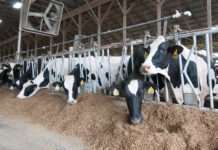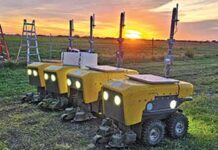MANHATTAN, Kan. – For many agricultural producers, dealing with noxious weeds can be an irritable part of daily life, but what if that noxious weed is a close relative to one of the prominent crops grown in Kansas and throughout the United States?
Johnsongrass is a noxious weed that is closely related to grain sorghum, and it is seemingly more tolerant to some of the pests—including insects and pathogens—that negatively affect grain sorghum.
Michael Smith, Kansas State University professor of entomology, is part of a new five-year, $4.8 million research project supported by the U.S. Department of Agriculture’s National Institute of Food and Agriculture, which intends to find genetic material in Johnsongrass that could help fight the noxious weed and improve grain sorghum’s tolerance of these pests.
The coordinated agricultural grant project, titled “Principles underlying the success of the weedy invader Sorghum halepense (‘Johnsongrass’) toward its containment and mitigation,” includes expertise in agronomy, ecology, entomology, genetics, genomics, microbiology, pathology, soil science and weed science from seven research institutions across the country, including K-State.
Smith said the researchers are examining how Johnsongrass is able to survive in different altitudes, different soil types, by contact with different pests and pathogens, and many more angles.
“(Johnsongrass) seems to survive quite well from year to year and will sustain populations of, for instance, greenbugs, chinch bugs, fall armyworms, bird cherry oat aphids and many of the other pests we have in Kansas,” Smith said. “You will find these pests on the plants. Plants will be alive. Pests will be alive.”
“We want to know how the Johnsongrass that is surviving is serving as a reservoir for pests that could be as damaging or more damaging to grain sorghum,” Smith continued. “We want to look at the pests that perhaps feed on the roots that could be harboring viruses that affect the crops; aphid pests will do that. We also want to know about the leaf-eating pests and if their growth is better on Johnsongrass than it is on sorghum.”
So, is there something in Johnsongrass, genetically, that affects the pests differently? The researchers have a place to start: a diversity panel listing almost 200 different genetic types of Johnsongrass and a collection of pest populations from the past growing season.
In the next 12 to 18 months, Smith and other researchers hope to get a rudimentary genetic fingerprint of each of these pest populations to have a baseline marker to compare them, such as looking for differences within all the greenbug populations. Once they feel comfortable if any differences exist, the next step would be to test the 200 types of Johnsongrass and their reaction to each of the insects.
“A lot of diversity exists in Johnsongrass, because it is spread all over the globe,” Smith said. “Specific types have been collected in all these different global locations. As you would expect, each one is going to be different, because it’s had to adapt to different conditions and different pests.”
“We hope to use the well-known diversity in Johnsongrass to tell us why some of these types have survived better than others, and in our case, survived pest damage better than others.”
The researchers aim to find a genetic marker among these Johnsongrass types for, say a chemical or physical factor that could be added into grain sorghum, and build more pest resistance into grain sorghum hybrids.
In addition to improving resistance to pests in grain sorghum, the research could help the other way by combating Johnsongrass, Smith said. Finding what makes Johnsongrass resilient against pests and some herbicides, and taking that defense out of the plant to make it more susceptible, might eliminate it as a successful, invasive weedy species.
Smith said an extension objective is included in the grant to enhance the knowledge base for improved cost-effective management decisions for producers. This involves partnering with K-State Research and Extension and other stakeholders as results become known.




